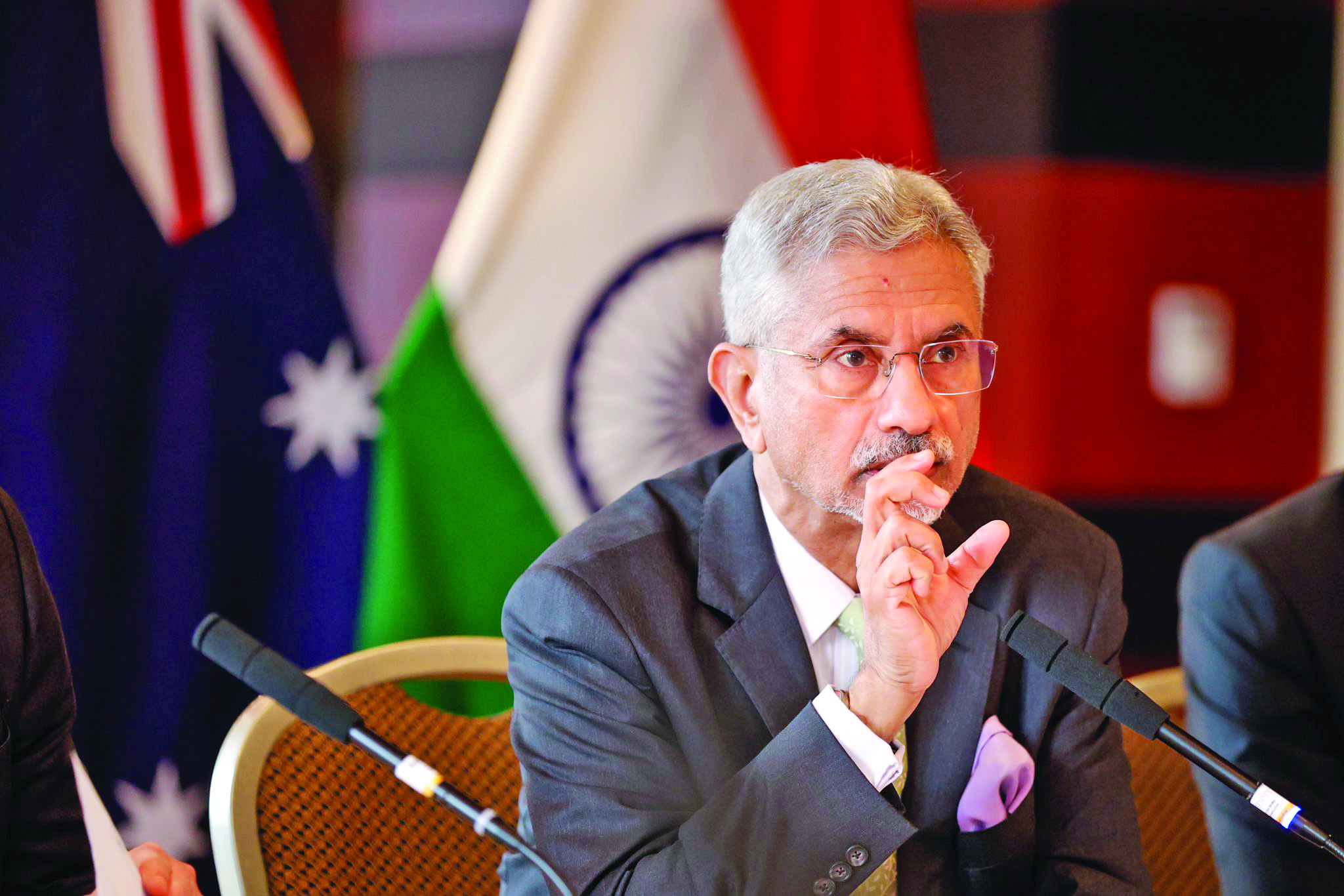EAM Jaishankar begins six-day US visit today to discuss bilateral ties

New Delhi: Foreign Minister S Jaishankar is set to embark on a significant visit to the United States from Tuesday, December 24 to December 29, 2024, ahead of the inauguration of the new Trump Administration. During his visit, Jaishankar will engage with his American counterparts to discuss a range of bilateral, regional, and global issues. Additionally, he will chair a conference of the Consul Generals of India in the USA.
The visit of the foreign minister is significant as bilateral cooperation between India and the US is further expected to strengthen across several key sectors. Energy cooperation is likely to shift back to expanding hydrocarbon trade, moving away from combating climate change. However, India’s climate progress has been driven by domestic imperatives rather than bilateral or multilateral support. US climate cooperation with India is expected to be led by philanthropies, city and state governments, and other institutions, similar to the 2017-2021 period.
Defence cooperation between the two nations is also expected to expand. Both major US political parties agree that China plays a destabilising role in the Indo-Pacific, and America has a strong interest in building partnerships to improve stability. The American approach to relations with India may become more transactional, but the significance of the partnership was well understood by officials in the first Trump administration and supported by President Trump himself.
Since the November 2008 elections and the inauguration of the new president in January 2009, both sides have effectively used the period to sensitise the incoming administration. It was also indicated that the civil nuclear agreement would be taken as settled law and that the relationship would be further developed with that in mind. Furthermore, President Obama invited then-Prime Minister Manmohan Singh as the first state visitor of his administration in 2009.
In 2017, Trump was unknown and untested in the foreign policy space. His criticism of Pakistan for undermining US efforts in Afghanistan and of China for its predatory economic and trade policies provided a ballast to the India-US relationship. Despite antipathy toward the previous administration, the Trump White House followed through on several steps flowing from earlier decisions. In November 2017, Ivanka Trump visited India for the Global Entrepreneurship Summit, a framework started by Obama. After the Obama administration declared India a Major Defence Partner in 2016, Trump placed India under Strategic Trade Authorisation Level 1, a category for technology releases on par with NATO allies. He also revived the Quad, a forum that had not seen much success since 2007, with official-level meetings in 2017 and foreign-minister-level meetings starting in 2019. He joined PM Modi in Houston in September 2019 for a rally of 50,000 Indian Americans and visited India in February 2020.
On the other hand, President Joe Biden began his tenure by elevating the Quad to summit-level meetings in March 2021. This reflects the importance that the United States and Biden attached to this format. The next summit will now take place in India in 2025, forcing the incoming team to focus early in the term on outcomes and deliverables from an India visit.
Biden also had a history of engagement with and support for India as the former ranking member and chairman of the United States Senate Committee on Foreign Relations and as the former vice president. After coming to office in 2021, the Biden National Security Council catalysed several pathbreaking areas of agreement with India. An initiative on Critical and Emerging Technology, also known as the iCET, was launched in January 2023. The ambit of the initiative includes exploring cooperation in artificial intelligence (AI), quantum technologies, cyber, 5G/6G, biotech, semiconductors, defence, and space.
A new avenue for defence cooperation was initiated in June 2023 through the India-US Defence Acceleration Ecosystem, or INDUS-X, bringing together defence start-ups from the two countries. Since then, the forum has conducted three meetings and also announced joint challenges and awards. Moreover, Modi was invited as a state visitor in June 2023, where he addressed a joint session of the US Congress for the second time (after having done so earlier in 2016). Very few world leaders have historically had such an opportunity. In September 2023, President Biden visited India for the G20 Summit, during which he held an extensive bilateral meeting with the Indian prime minister.
The Biden administration continued the Trump administration’s 2018 initiative of holding 2+2 meetings of foreign and defence ministers. These convenings were held in April 2022 and November 2023, following the three held during the earlier presidency. This has led to several decisions bucking past trends and hesitations.
Recently, both countries have signed several agreements that seek to enhance potential mutual support and collaboration opportunities. These included the Logistics Exchange Memorandum of Agreement for mutual logistics support in 2016, the Communications Compatibility and Security Agreement in 2018, the Industrial Security Annex for enabling private sector participation in the defence supply chain in 2019, and the Basic Exchange and Cooperation Agreement for the sharing of geospatial information in 2020. Following these, the two countries finalised an industrial cooperation roadmap in 2023 and a security of supply agreement for priority in defence supplies in 2024.
Both countries now conduct more bilateral military exercises with each other than with any other country. These have included army, navy, air force, tri-service, and special forces exercises, with the stated objective of building toward interoperability. Policy discussions have now extended to defence, cyber, space, and AI.



